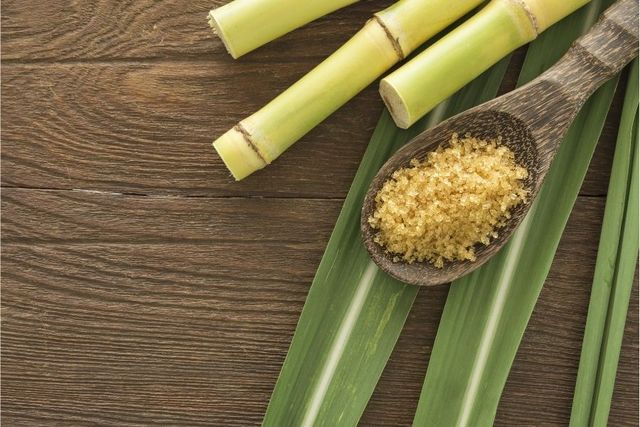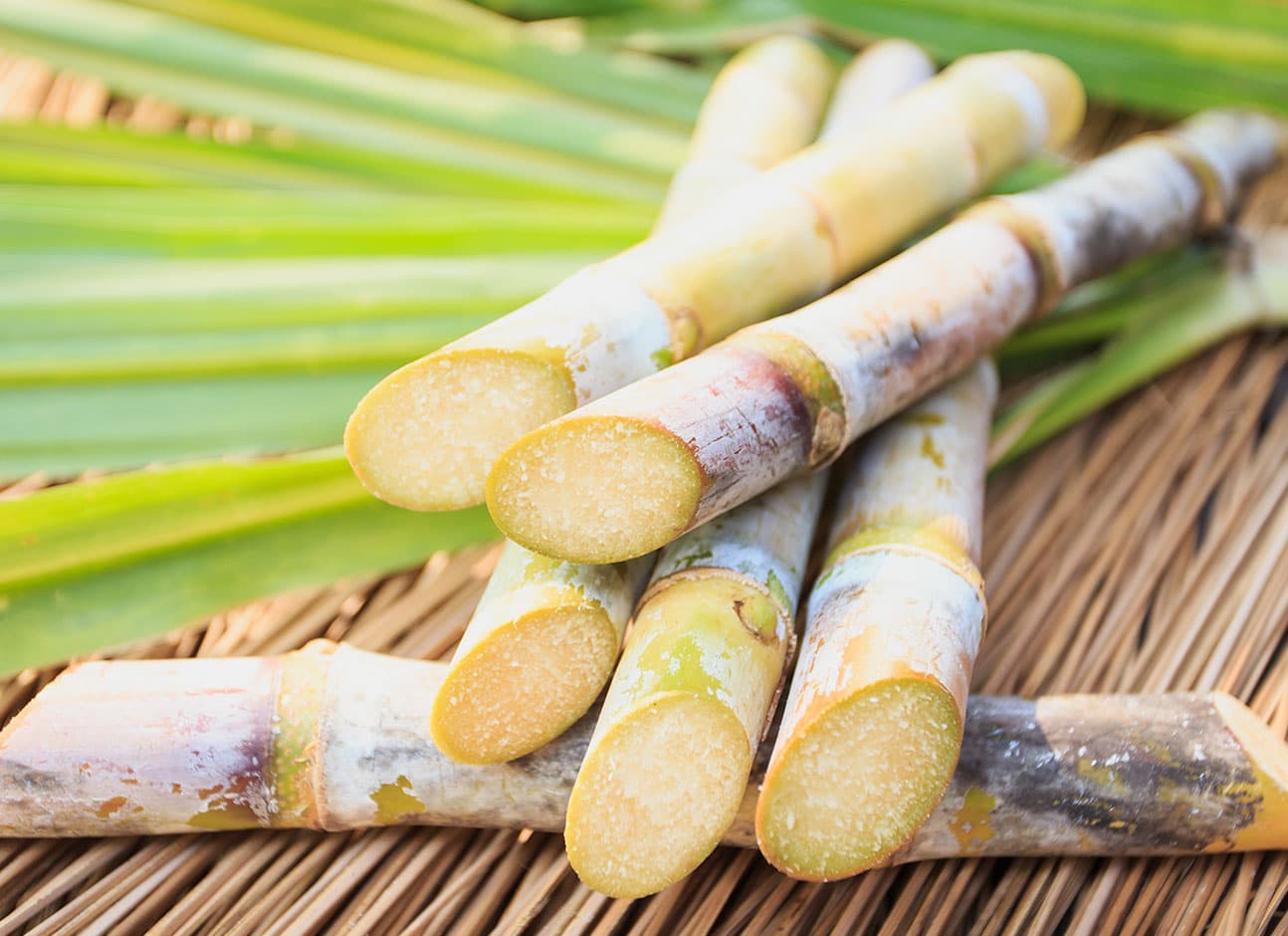What Are Sugar Canes Used For Besides Sugar? Discover the Hidden Uses
Discover the Numerous Uses Sugar Canes: What Are Sugar Canes Utilized For in Everyday Life?
Sugar canes are usually forgotten regardless of their considerable payments to day-to-day live. Primarily recognized for their duty in sugar manufacturing, they extend their utility to various lasting techniques and cooking applications. From sweetening foods to working as green products, sugar walking canes supply a variety of benefits. Yet, their prospective goes even better. What other surprising uses do they keep in contemporary culture?
The Sugary Food Side: Sugar Manufacturing and Its Importance
Sugar walking stick acts as a crucial resource for sugar production, contributing substantially to global food supply and economies. This exotic lawn, mainly grown in regions with warm climates, produces a high focus of sucrose, which is removed and fine-tuned into different sugar products. The sugar generated from walking stick is not only a staple sweetener in numerous homes but additionally plays an important duty in the food market, maintaining and boosting tastes foods. What Are Sugar Canes Used For.Moreover, sugar walking cane farming sustains millions of farmers and workers, supplying resources and stimulating economic growth in many establishing nations. The market fosters profession, creating significant export profits for countries that produce it in wealth. In addition, the byproducts of sugar walking stick processing, such as molasses and bagasse, are utilized in different industries, even more intensifying its financial relevance. Generally, sugar walking stick continues to be an essential farming product with far-reaching effects for food security and financial advancement
Past Sugar: Culinary Uses of Sugar Canes

While the manufacturing of sugar from sugar walking stick is commonly acknowledged, its culinary applications prolong much beyond a mere sweetener. Cooks and home chefs alike have discovered the adaptability of sugar walking stick in numerous recipes. The stalks can be juiced to produce a renewing syrup, which enhances dressings and marinates, adding depth to tasty meals. In addition, sugar cane juice serves as an all-natural sweetener in treats, supplying an unique flavor profile that varies from refined sugar.The fibrous pulp remaining from juicing can be made use of in baking, conveying dampness and a subtle sweetness to pastries and breads. In some cultures, sugar cane is barbequed or roasted, causing a caramelized reward taken pleasure in as a treat. Sugar cane can be incorporated into savory dishes, where its natural sweet taste balances flavors and enhances the total taste. This complex active ingredient proceeds to influence culinary imagination across various cuisines.
Sugar Canes in the Drink Industry
Sugar walking sticks play a significant function in the drink sector, working as an all-natural sugar in various beverages. Furthermore, they are crucial in the production of rum, adding to the distinctive tastes of this preferred spirit. As consumers look for much healthier choices, sugar walking sticks use alternatives that stabilize sweetness with nutritional benefits.
Natural Sugar in Drinks
All-natural sweeteners stemmed from sugar walking canes have become important to the beverage sector, enhancing flavor profiles and using a more authentic preference experience. These sweeteners, such as walking stick sugar, molasses, and syrups, are commonly made use of in numerous drinks, from soft drinks and juices to teas and mixed drinks. Unlike man-made sugar, cane-derived choices provide a natural sweetness that consumers usually like. Furthermore, they add to the overall mouthfeel and balance of flavors in beverages. The adaptability of sugar cane sugar enables innovative mixes, satisfying dietary preferences and varied tastes. As the demand for all-natural active ingredients remains to climb, sugar walking stick sweeteners are positioned to play a significant role in the evolution of the beverage landscape.
Rum Production Process
The production of rum showcases the versatility of sugar walking sticks beyond their duty as a sweetener in beverages. Initially, sugar walking canes are harvested and crushed to remove their juice, which has high levels of sugar. This juice is then fermented making use of yeast, which transforms the sugars into alcohol. The fermentation procedure can take numerous days, depending upon the desired taste profile. After fermentation, the resulting fluid, called "clean," is distilled to boost the alcohol content and fine-tune the taste. The purification procedure can differ, with some manufacturers choosing pot stills while others utilize continuous column stills. Finally, the rum undertakes aging in barrels, which boosts its flavor and shade before bottling, ready for usage.
Much Healthier Drink Alternatives
While many consumers look for healthier choices in their drink choices, sugar cane functions as a compelling base for a selection of nourishing options. Sugar walking cane juice, abundant in vitamins and minerals, is a prominent option in tropical regions, supplying a renewing, all-natural sweetness without the additives found in many processed beverages. Additionally, sugar walking stick essences are increasingly being made use of in the formula of herbal teas and health tonics, giving an all-natural source of energy with reduced glycemic influence contrasted to fine-tuned sugars. Cutting-edge drinks incorporating sugar walking cane with flavors and fruits provide to health-conscious consumers looking for savory yet beneficial alternatives. These alternatives not only support a much healthier way of living but additionally a knockout post contribute to the lasting use sugar cane as a functional component in the drink market.
Sustainable Practices: Sugar Canes and Eco-Friendly Solutions
As global awareness of environmental issues expands, sustainable practices in farming have come to be significantly essential, especially in the cultivation of sugar cane. Farmers are embracing methods such as plant rotation, which assists improve soil health and wellness and decrease parasite populations. In addition, integrated parasite management techniques decrease making use of dangerous pesticides, promoting a healthier ecosystem.Water conservation strategies, consisting of drip irrigation and rain harvesting, are also being used to optimize water usage in sugar cane farming. These methods not only boost sustainability yet likewise enhance crop return and quality.Furthermore, the use of natural fertilizers acquired from sugar cane by-products adds to dirt fertility without the adverse effects connected with artificial plant foods. Because of this, the growing of sugar walking stick can line up with environmentally friendly remedies, supplying a course in the direction of even more sustainable agricultural practices that profit both the setting and local areas.

Biofuels and Energy: The Duty of Sugar Canes
Sugar canes serve a vital role in the manufacturing of biofuels, especially ethanol, which is significantly recognized as a renewable resource resource. This exotic crop is rich in sugars, making it a perfect prospect for fermentation procedures that transform these sugars into alcohol. The ethanol produced from sugar canes can be combined with fuel, decreasing dependence on fossil gas and reducing greenhouse gas emissions.Countries such as Brazil have actually efficiently incorporated sugar walking cane ethanol right into their power systems, bring about significant decreases in carbon footprints. Furthermore, the cultivation of sugar walking sticks for biofuel contributes to country development by providing tasks and boosting neighborhood economies.As the need for sustainable energy remedies expands, sugar walking sticks are emerging as a sensible alternative to typical nonrenewable fuel sources. Their capacity to generate cleaner power lines up with worldwide initiatives to fight climate change and advertise ecological sustainability.
Cutting-edge Applications: From Packaging to Drugs
The flexibility of sugar walking canes extends far past biofuels, locating ingenious applications in numerous sectors such as packaging and drugs. In the product packaging field, eco-friendly materials originated from sugar walking stick offer a green alternative to typical plastics. These materials not just minimize ecological impact but also provide effective defense for products.In the pharmaceutical industry, sugar walking stick derivatives are made use of in medication formulations and as excipients, enhancing the efficacy and stability of drugs. Their all-natural beginnings attract the expanding demand for lasting and non-toxic components in healthcare products.Furthermore, sugar cane essences are being discovered for their potential wellness benefits, including antioxidant and anti-inflammatory residential or commercial properties. This expansion into diverse areas shows the versatility of sugar walking sticks, placing them as a valuable source in attending to modern-day obstacles throughout several industries, from sustainability to health care.
Regularly Asked Inquiries
Just How Do Sugar Canes Affect Local Economies?

What Nutritional Conveniences Do Sugar Canes Deal?

Can Sugar Canes Be Expanded in All Climates?
Sugar canes flourish in subtropical and exotic climates, calling for warm temperature levels and ample rainfall. They have a hard time in chillier regions, making their farming restricted to details geographical areas where environmental problems are favorable for development.
Exist Any Type Of Health And Wellness Threats Connected With Sugar Walking Cane Consumption?
Problems relating to sugar walking stick consumption consist of potential weight gain, enhanced blood sugar level degrees, and dental concerns (What Are Sugar Canes Used For). Small amounts is essential, as extreme intake might lead to health and wellness complications, demanding understanding of individual nutritional demands and conditions
How Are Sugar Canes Harvested and Processed?
Sugar canes are gathered utilizing mechanical or hands-on approaches, cut at the base, and after that moved to mills. There, they undertake crushing, juicing, and steaming to remove sugar and generate different byproducts for varied applications. The sugar created from cane is not just a staple sweetener in numerous households but also plays an essential role in the food market, improving tastes and preserving foods.Moreover, sugar walking stick growing supports millions of workers and farmers, providing livelihoods and stimulating economic development in numerous developing nations. In addition, sugar walking stick removes are progressively being used in the formula of natural teas and health restoratives, offering a natural source of power with reduced glycemic influence contrasted to fine-tuned sugars. The ethanol created from sugar walking canes can be mixed with gas, reducing reliance on fossil fuels and decreasing greenhouse gas emissions.Countries such as Brazil have successfully incorporated sugar walking cane ethanol right into their power systems, leading to considerable reductions in carbon footprints. In addition, the farming of sugar walking canes for biofuel browse this site adds to country growth by offering work and boosting neighborhood economies.As the need for lasting power solutions grows, sugar canes are arising as a feasible alternative to standard fossil gas. Issues relating to sugar walking cane consumption include possible weight gain, boosted blood sugar levels, and oral problems.